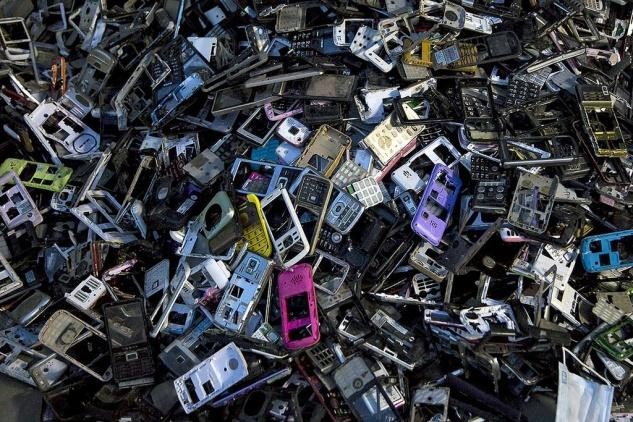
Electronic waste, or e-waste is a term used to describe any electronic device that is outdated, obsolete, broken, donated, discarded, or at the end of its useful life. This includes cell phones, computers, laptops, monitors, televisions, printers, scanners, and any other electrical device. In addition, e-waste also encompasses items that can be e-cycled (electronics that are going to be reused, resold, salvaged, or recycled). Electronic Waste (e-waste) is one of the fastest growing segments of our nation’s waste stream. This makes sense as our technology growth rate continues to accelerate exponentially. As previously mentioned, technology seems to become all but obsolete only a short time after it’s purchased. Our obsession with ever-advancing technology has placed a high standard on all of our products, demanding that each generation quickly improves upon the last.

Here are some basic examples of common electronics that quickly evolved and turned previous versions into electronic waste.
– Cell phones, Smart phones, Pagers, Computer monitors, Computers/CPUs, Laptop computers, Photocopiers, Printers, Scanners, Fax machines,Stereos,Radios,MP3 players (or iPods),Landline telephones, DVDs, Televisions (Tube, plasma, and LCD, LED),VCRs, Cameras, CD players, Video game consoles etc.
Here is a list of some of the more recent electronic items that will most likely render their predecessors useless.
– All smart devices (iPhones, iPads, iWatches, Fitbits, Kindles, Nooks, Amazon Fire Tablet, etc.),Virtual Reality (VR) gear,Virtual Assistants (Amazon Echo, Google Home, etc.) ,Electric scooters, Portable speakers,Security cameras,Roombas, Professional and personal drones, Projectors,Modems and routers,GPS Devices,Smart bathroom scales,Some thermostate etc etc.
How does e-waste affect the environment?
At this time the effects of improper e-waste disposal are not well known, however, the effects that are known have a very real global impact on the earth’s air, water, and soil.
- The air pollution impact of e-waste:
Burning e-waste can be used as a disposal method but can also be a way to get to valuable metals such as copper. The problem with this method is that burning can also release pollutants into the air. For instance – when computer monitors and other electronics are burned, they create cancer-producing dioxins that are then released into the air that we breathe.

- The impact of e-waste on water:
Lead, barium, mercury and also lithium (found in mobile phone and computer batteries). When these heavy metals are improperly handled or disposed of via landfill, they can leak into the soil and eventually the groundwater. Picture the groundwater as the first domino waiting to fall. The heavy metals then make their way from the groundwater into streams then ponds, lakes, and rivers. These heavy metals make the water tables toxic and unusable for the communities, animals, and plants that rely on them.
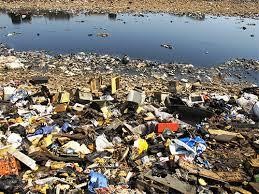
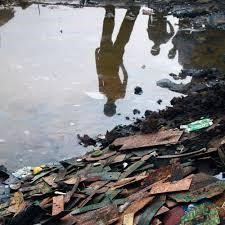
- The impact of e-waste on soil:
E-waste has a very negative impact on the Soil-Crop-Food Pathway. The Soil-Crop-Food Pathway is exactly as it sounds – crops grow in the soil and food comes from the crops. When the soil is contaminated by heavy metals via e-waste the crops, and the food they provide, are also contaminated. This causes many of the illnesses mentioned above and restricts viable farmland for clean food production.
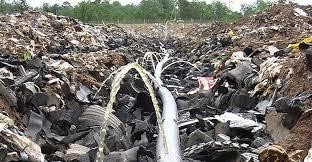
- The impact of e-waste on land availability: As per study India alonelikely to generate 52 lakh metric tonnes of electronic waste by 2020 from the current level of 18 lakh metric tonnes. With such huge e-waste generation we need huge dumping landfill sites.
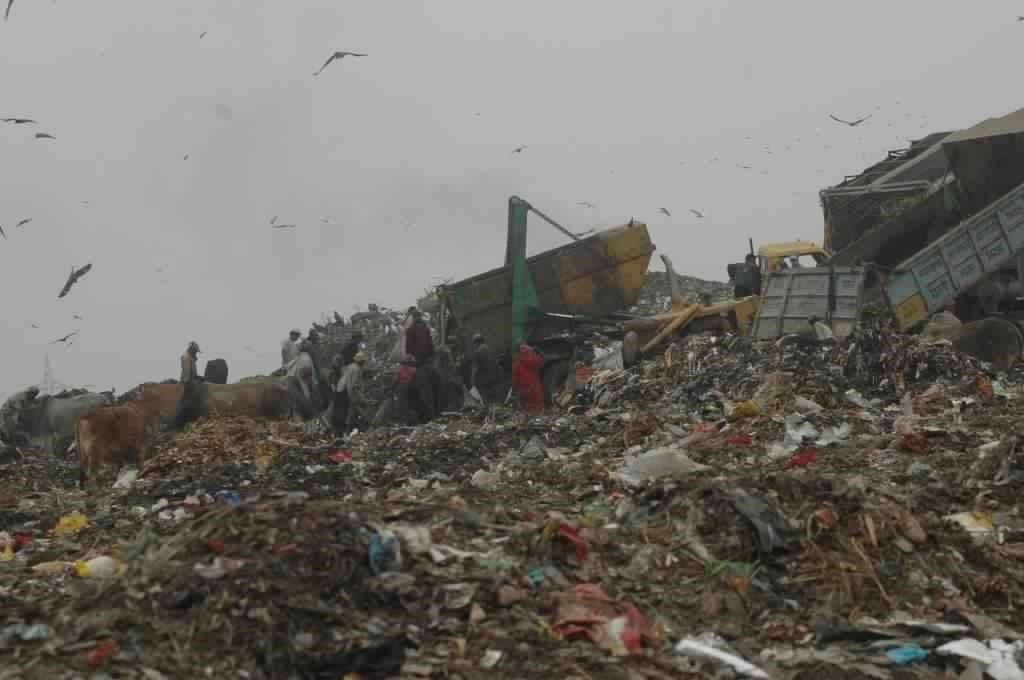

E-waste is the Toxic Legacy of our Digital Age?
Many electronic devices include heavy metals such as lead, cadmium, mercury and arsenic. If not handled properly, these can poison our environment and threaten the health of individuals and communities.
India, the fifth largest producer of e-waste, is likely to generate 52 lakh metric tonnes of electronic waste by 2020 from the current level of 18 lakh metric tonnes, according to a study. India’s e-waste is growing at 30 per cent per annum. The global volume of e-waste generated is expected to reach 130 million tonnes (MT) in 2018 from 93.5 MT in 2016 at a compound annual growth rate of 17.6 per cent from 2016 to 2018.
Among the 10 largest e-waste generators are Maharashtra, Tamil Nadu, Andhra Pradesh, Uttar Pradesh, West Bengal, Delhi, Karnataka, Gujarat, Madhya Pradesh and Punjab,in that order and among top 10 cities generating e-waste, Mumbai ranks first followed by Delhi, Bengaluru, Chennai, Kolkata, Ahmedabad, Hyderabad, Pune, Surat and Nagpur. Government, public and private (industrial) sectors account for almost 70 per cent of total e-waste generation. The contribution of individual households is smaller – about 15 per cent – while manufacturers contribute the remaining.
Researchers at Jamia Millia Islamia studied soil and groundwater in East Delhi’s Krishna Vihar industrial area and discovered an alarming amount of toxic heavy metals leaching into them. Krishna Vihar houses unorganised e-waste handling and dumping units and is dotted with recycling units that release their hazardous effluents, including heavy metals, directly into open lands. Often solid waste is disposed just by burning it in the open.
Soil and groundwater samples were collected from five locations selected on the basis of e-waste activity around them. To compare their findings, researchers chose another five locations where there was no e-waste-related activity.
the study revealed dangerous levels of contamination in both soil and groundwater near unregulated and heavily polluted e-waste dumps.
The average concentration of heavy metals (copper, lead, cadmium and chromium) in the e-waste site topsoil samples was found to be far above the range in standard agriculture soil. The average copper concentration in top soils of e-waste sites was nearly 30 times compared to reference site top soil samples. Copper concentration in the top soil was found to be 283.23 mg/kg. A close second was lead, which had a concentration of 298.10 mg/kg.
The average cadmium concentration in top soil samples was 16 times greater than that of agricultural standards, as opposed to reference site samples, which had negligible cadmium concentrations. This possibly indicated that cadmium and its compounds, which are widely applied in electrical and electronic products, have found their way into the soil in areas with high e-waste recycling activity.
The concentration of all heavy metals, except zinc, in water in areas around e-waste treatment units, was also more than the prescribed limits. It was found that average concentration of copper in water sample in the e-waste site was 29 times higher than the water standards and eight times higher than the reference water levels. Copper concentration was found to be 1.465 mg/litre in the e-waste site water sample.
If we don’t manage e-waste in a sustainable way, toxic substances will be released into the environment. Cadmium, chromium, lead and other heavy metals, when exposed to the environment, leach into groundwater. Very soon it enters the food chain through bio-accumulation and can leads to damage of nervous systems, blood systems, kidneys and brain development, respiratory disorders, skin disorders, lung cancer, bronchitis, heart, liver, and spleen damage.
Why is E-Cycling important?
A study on thermal decomposition of waste from electrical and electronic equipment has found that most of the e-waste generated around the world does not get treated properly and ends up in developing countries where it mostly gets burned.
This results in production of brominated pollutants which have carcinogenic effects.
Proper disposal of waste from electrical and electronic equipment (WEEE) includes a visit to reuse and recycle treatment plants and destruction of parts which release carcinogenic products in thermal systems under controlled environment.
Apart from this these e-waste have precious metals such as gold, silver and palladium; special metals such as cobalt, indium and antimony; and metals such as copper and tin. These are present in individual waste in traces, but one tonne of mobile phones has as much as 340 grams of gold, 3.5 kilograms of silver, 140 grams of palladium and 130 kilograms of copper.The country produces 65,000 tonnes of e-waste from mobile phones in a year. But there are very few recycling units in India to recover these, so scrap dealers extract as much as they can and export the rest. The country thus loses 70 per cent of recoverable precious metals present in electronic junk.
Computers, mobile phones and other electronic products use a staggering 320 tonnes of gold and more than 7,500 tonnes of silver annually worldwide. Often, these are 40 to 50 times richer than their ores, states a report by Global e-Sustainability Initiative (GeGI). One tonne of scrap from discarded computers contains more gold than can be produced from 17 tonnes of gold ore. A mobile phone contains five to 10 times more gold than gold ore. What’s more, 17 precious and semi-precious metals can be extracted from e-waste But exporters get value for only four elements—gold, silver, copper and palladium. Worse, their value is much more if extracted in the country.
Step-by Step Process of E-waste Recycling
The e-waste recycling process is highly labor intensive and goes through several steps. Below is the step-by-step process of how e-waste is recycled,
- Picking Shed:-When the e-waste items arrive at the recycling plants, the first step involves sorting all the items manually. Batteries are removed for quality check.
- Dismantling:-After sorting by hand, the second step involves a serious labor intensive process of manual dismantling. The e-waste items are taken apart to retrieve all the parts and then categorized into core materials and components. The dismantled items are then separated into various categories into parts that can be re-used or still continue the recycling processes.
- Size reduction process:-Here, items that cannot be dismantled efficiently are shredded together with the other dismantled parts to pieces less than 2 inches in diameter. It is done in preparation for further categorization of the finer e-waste pieces. The finer e-waste particles are then evenly spread out through an automated shaking process on a conveyor belt. The well spread out e-waste pieces are then broken down further. At this stage, any dust is extracted and discarded in a way that does not degrade the environmentally.
- Passing Over-band Magnet:-At this step, over-band magnet is used to remove all the magnetic materials including steel and iron from the e-waste debris.
- Non-metallic and metallic components separation:-The next step is the separation of metals and non-metallic components. Copper, aluminium, and brass are separated from the debris to only leave behind non-metallic materials. The metals are either sold as raw materials or re-used for fresh manufacture.
- Water Separation:-As the last step, plastic content is separated from glass by use of water. One separated, all the materials retrieved can then be resold as raw materials for re-use. The products sold include plastic, glass, copper, iron, steel, shredded circuit boards, and valuable metal mix.
E-cycle components re-use
- Plastic:- All the plastic materials retrieved are sent to recyclers who use them to manufacture items such as fence posts, plastic sleepers, plastic trays, vineyard stakes, and equipment holders or insulators among other plastic products.
- Metal:- Scrap metals materials retrieved are sent to recyclers to manufacture new steel and other metallic materials.
- Glass:- Glass is retrieved from the Cathode Ray Tubes (CRTs) mostly found in televisions and computer monitors. Extracting glass for recycling from CRTs is a more complicated task since CRTs are composed of several hazardous materials. Lead is the most dangerous and can adversely harm human health and the environment. Tubes in big CRT monitors can contain high levels of lead of up to 4 kilograms. Other toxic metals such as barium and phosphor are also contained in CRT tubes
- Mercury:- Mercury containing devices are sent to mercury recycling facilities that uses a specialized technology for elimination for use in dental amalgams and metric instruments, and for fluorescent lighting.
- Printed Circuit Boards:- Circuit boards are sent to specialized and accredited companies where they are smelted to recover non-renewable resources such as silver, tin, gold, palladium, copper and other valuable metals.
- Hard Drives:-Hard drives are shredded in whole and processed into aluminium ingots for use in automotive industry.
- Ink and Toner Cartridges:- Ink and toner cartridges are taken back to respective manufacturing industries for recycling. They are remanufactured while those that can’t are separated into metal and plastic for re-use as raw materials.
- Batteries:- Batteries are taken to specialized recyclers where they are hulled to take out plastic. The metals are smelted is specialized conditions to recover nickel, steel, cadmium and cobalt that are re-used for new battery production and fabrication of stainless steel.
Why E-Waste Management is so important and need of the hour?
Recycling of electronic waste is essential as the problem will only expand not diminish. The bright spot is that with the right technology, it can also be quite lucrative, create essential jobs, and generate new revenue streams. Apart from this following are few more reasons why we should manage our e-waste-
- Recognition of the difficulty of disposing of electronic waste compared to other kinds of waste.
- A major shortage of landfill sites, and concerns about the contamination of soil, groundwater, and other resources.
- Growing awareness of the benefits of recovering and utilizing the valuable resources contained in electronic waste.
- The willingness to develop recycling companies that turn solid industrial waste back into raw materials that can then be used anew.
The advent of sophisticated recycling technology has played a major role in the success of electronic-waste recycling program.
E-waste management equipment used to grind down electronic waste into various particle sizes. E-Waste management equipments can process large and small domestic appliances, metal scrap, and other bulky items. It breaks down and grinds up materials down to one inch or less in size in a single pass, and the particle size can easily be adjusted. These equipments works on fundamental of “impact mill” that uses thousands of collisions to break down pre-shredded composite materials, isolate various components, and then mill them into tiny, smooth balls that are easily separated.

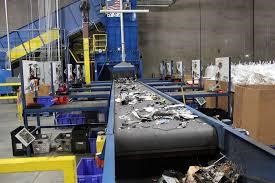
We have yet to discover more effective ways to manage our e-waste. Current technologies are extremely labour intensive and very expensive to extract the value of these materials from such devices. This is the reason millions of tons of e-waste have been exported to third world countries, where it is often handled by children in unsafe and toxic environments. As per one recent study it is said that about two-thirds of e-waste workers in India are suffering from respiratory ailments like breathing difficulties, irritation, coughing and choking.
Governments, cities, and towns are now starting to take a proactive approach to handling e-waste. For examples, the majority of consumers know that is illegal to dispose of televisions, computer monitors, and other cathode ray tube devices in most landfills. However, many of these same consumers have accumulated piles of e-waste in their homes and businesses because there has not been an effective and convenient method for disposal. In fact most people are unsure what to do with these products, since they can no longer be dumped in our landfills.
It is each individual’s responsibility to protect our environment, our citizens, and the world community, from unsafe e-waste disposal practices. We have to created a network of approved e-waste collectors and recyclers, to handle our e-waste in a safe and responsible manner and make this world safe and better place to live.
About author
The author is General Manager OF M P Construction Co. with nearly 14+ years of experience in construction projects & leveraging standalone expertise in making timely decisions that positively impact project success. His expertise is Project Execution & Project Management for Various Civil Projects Railways/Metro/Bridges/ Building/Highway/Airports etc. He is currently handling Chennai Metro Rail project, Western Dedicated Freight Corridor and Railway Line Doubling work of Dound-Kalburgi Section in Solapur Division of Central, Railway-Maharashtra.

